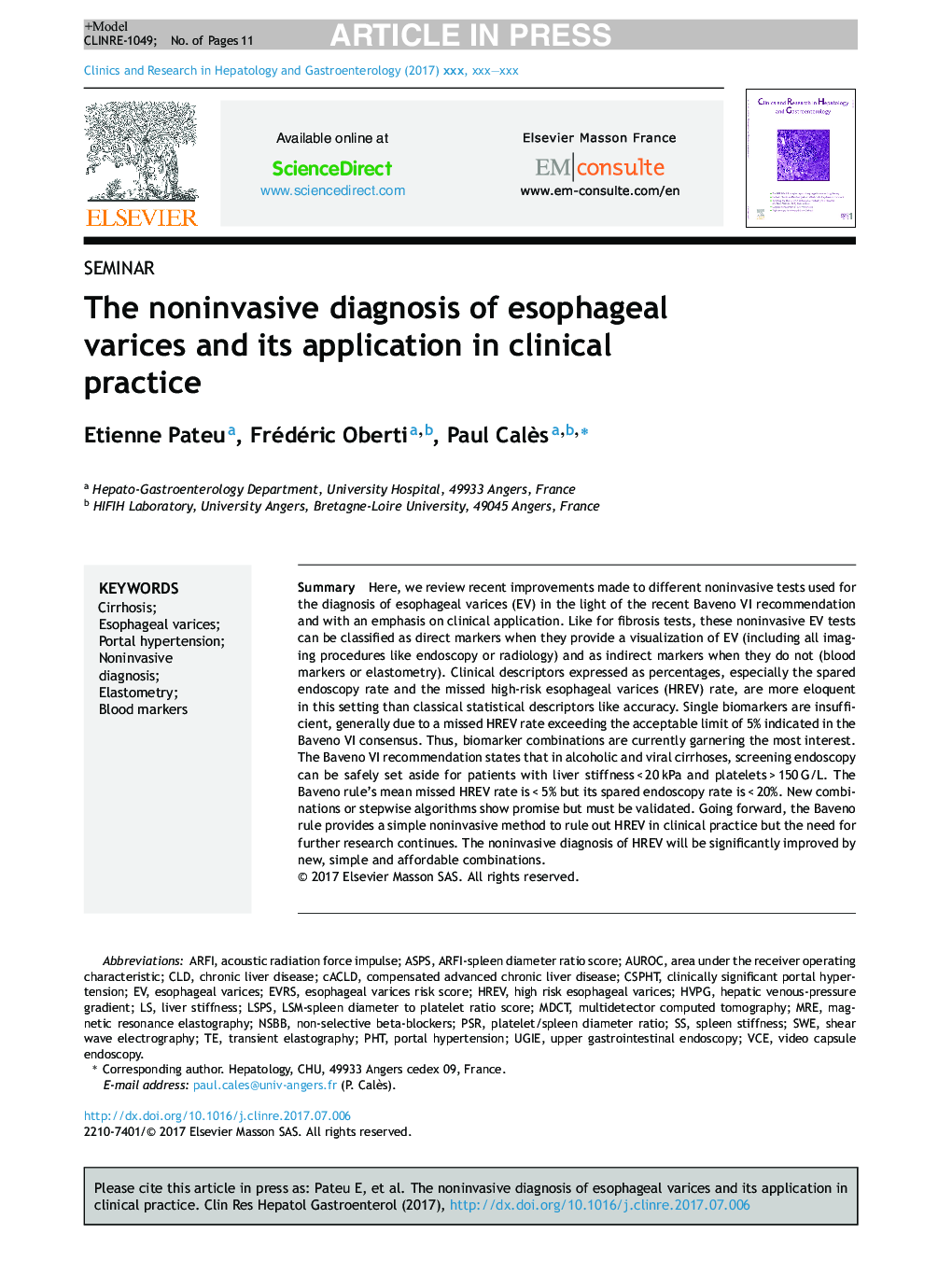| Article ID | Journal | Published Year | Pages | File Type |
|---|---|---|---|---|
| 8725464 | Clinics and Research in Hepatology and Gastroenterology | 2018 | 11 Pages |
Abstract
Here, we review recent improvements made to different noninvasive tests used for the diagnosis of esophageal varices (EV) in the light of the recent Baveno VI recommendation and with an emphasis on clinical application. Like for fibrosis tests, these noninvasive EV tests can be classified as direct markers when they provide a visualization of EV (including all imaging procedures like endoscopy or radiology) and as indirect markers when they do not (blood markers or elastometry). Clinical descriptors expressed as percentages, especially the spared endoscopy rate and the missed high-risk esophageal varices (HREV) rate, are more eloquent in this setting than classical statistical descriptors like accuracy. Single biomarkers are insufficient, generally due to a missed HREV rate exceeding the acceptable limit of 5% indicated in the Baveno VI consensus. Thus, biomarker combinations are currently garnering the most interest. The Baveno VI recommendation states that in alcoholic and viral cirrhoses, screening endoscopy can be safely set aside for patients with liver stiffness < 20 kPa and platelets > 150 G/L. The Baveno rule's mean missed HREV rate is < 5% but its spared endoscopy rate is < 20%. New combinations or stepwise algorithms show promise but must be validated. Going forward, the Baveno rule provides a simple noninvasive method to rule out HREV in clinical practice but the need for further research continues. The noninvasive diagnosis of HREV will be significantly improved by new, simple and affordable combinations.
Keywords
PSRUGIENSBBVCEMRELSPSHVPGASPSAUROCCLDSWEPHTMDCTVideo capsule endoscopyUpper gastrointestinal endoscopyTransient elastographyMagnetic resonance elastographyclinically significant portal hypertensionChronic liver diseasenoninvasive diagnosisMultidetector computed tomographySpleen stiffnessLiver stiffnessCirrhosisArea under the receiver operating characteristicARFIBlood markersacoustic radiation force impulseesophageal varicesPortal hypertension
Related Topics
Health Sciences
Medicine and Dentistry
Gastroenterology
Authors
Etienne Pateu, Frédéric Oberti, Paul Calès,
